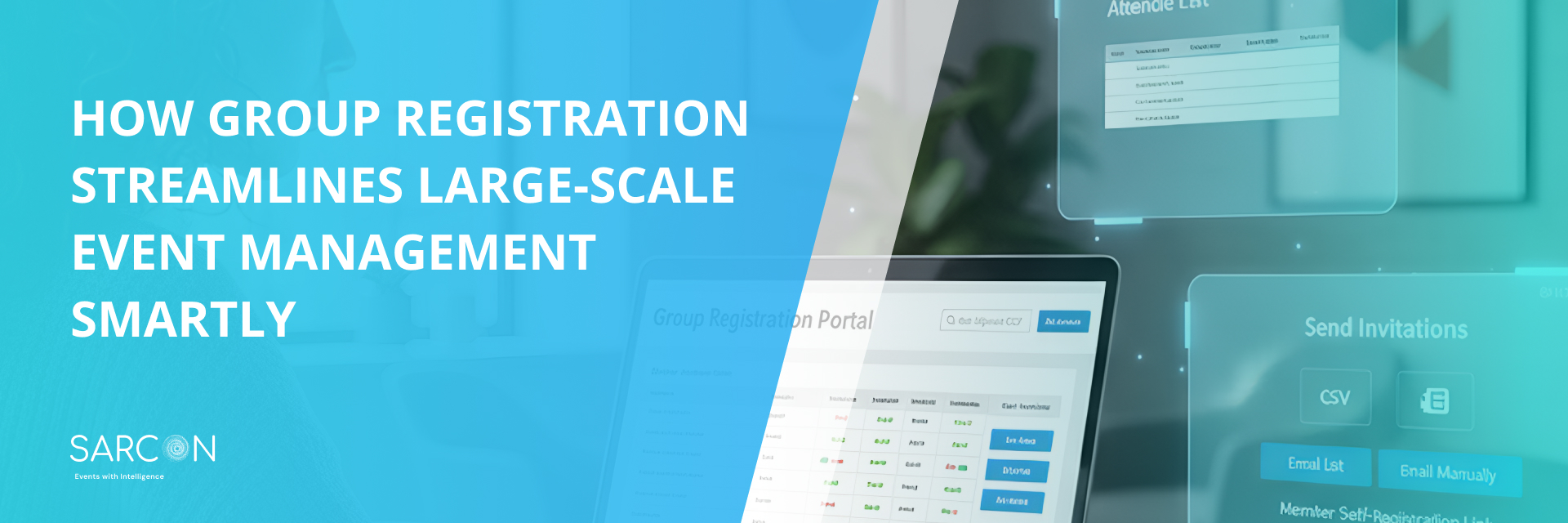In-person events hold a special place in our lives, offering opportunities for networking, learning, and celebrating. Whether you’re organizing a corporate conference, a wedding, a trade show, or a community fundraiser, successful event planning is essential to ensure that everything runs smoothly. To help you navigate the complexities of event planning, we’ve compiled a list of 20+ dos and don’ts that will guide you towards hosting a memorable and seamless event.
Dos of In-Person Event Planning
- Set Clear Objectives: Begin by defining the purpose and goals of your event. Is it meant for networking, education, entertainment, fundraising, or something else? Knowing your objectives will help you make decisions throughout the planning process, from choosing the right venue to selecting speakers or entertainment that aligns with your goals.
- Create a Detailed Budget: Your budget should cover all anticipated expenses, including venue costs, catering, decorations, marketing, permits, insurance, and contingency funds for unexpected expenses. A well-structured budget is crucial for managing your finances and avoiding overspending.
- Start Early: The earlier you start planning, the more options you have for venues, vendors, and sponsors. Some popular venues and suppliers may be booked months or even years in advance, so early planning is essential.
- Choose the Right Venue: Selecting the right venue is critical. Consider factors like location, capacity, layout, accessibility, and whether it suits your event’s theme. Visiting the venue in person allows you to visualize how your event will flow within the space.
- Secure Reliable Vendors: Research and vet vendors thoroughly. Read reviews, ask for references, and assess their previous work to ensure they meet your standards. This applies to caterers, photographers, audiovisual teams, and any other service providers you might need.
- Delegate Responsibilities: Building a capable team and delegating tasks is vital. Assign specific responsibilities to individuals based on their skills and expertise. Effective delegation frees up your time to focus on strategic planning.
- Develop a Comprehensive Timeline: A detailed event timeline should cover every aspect of your event planning, from initial brainstorming to post-event follow-up. It should include deadlines, milestones, and tasks for all team members to ensure everyone is on the same page.
- Promote Effectively: Successful event promotion involves a multi-channel strategy. Use social media, email marketing, print materials, partnerships with relevant organizations, and even influencer collaborations to reach your target audience effectively.
- Offer Online Registration: Implementing an online registration system streamlines attendee management. It provides convenience for participants, allows you to gather important data, and reduces the administrative burden of handling physical registrations. Using tech can simplify and streamline a lot of complex tasks, here is a comrehensive list of 72 Event Management Software and Tools for Event Organizers to pick from.
- Provide Clear Communication: Transparency is key. Regularly update attendees, sponsors, and vendors about important event information, changes, and deadlines. Clear communication fosters trust and ensures everyone is well-informed.
- Plan for Contingencies: No matter how meticulously you plan, unexpected issues can arise. Be prepared by having contingency plans in place. This might involve backup venues, alternative transportation options, or backup suppliers in case of vendor cancellations.
- Focus on Attendee Experience: The attendee experience should be at the forefront of your planning. Consider aspects such as seating arrangements, signage for easy navigation, and a well-thought-out event flow to ensure attendees have an enjoyable and memorable time.
- Have a Backup Power Source: For events heavily reliant on technology, having backup power sources like generators can prevent disruptions caused by unexpected power outages and ensure that presentations and equipment continue to function smoothly.
- Offer Diverse Catering Options: Ensure that your catering menu accommodates various dietary preferences and restrictions. This includes vegetarian, vegan, gluten-free, and allergen-free options. Attendees appreciate having a variety of food choices.
- Maintain Sustainability: Incorporating sustainable practices into your event planning, such as providing recycling bins, using reusable materials, and using energy-efficient lighting, demonstrates your commitment to environmental responsibility.
Don’ts of In-Person Event Planning
- Overlook Permits and Regulations: Neglecting to obtain the necessary permits and adhere to local regulations can lead to legal issues and even the shutdown of your event. Ensure you are aware of and compliant with all legal requirements.
- Rush Venue Selection: Choosing the venue is one of the most critical decisions in event planning. Rushing this decision can lead to regrettable choices. Take the time to find a venue that aligns with your event’s needs and vision.
- Overspend on Unnecessary Items: Sticking to your budget is crucial. Avoid overspending on extravagant elements that don’t significantly enhance the overall event experience. Focus on allocating your budget where it matters most.
- Wait Until the Last Minute: Last-minute planning can result in rushed decisions and higher costs. Start planning early to secure the best options and avoid unnecessary stress.
- Assume Everything Will Go as Planned: Murphy’s Law can apply to event planning – if something can go wrong, it might. Be prepared for unexpected challenges and have contingency plans in place to address them swiftly.
- Neglecting Safety Measures: Attendee safety should be a top priority. Address security concerns, crowd control, and have a well-thought-out emergency response plan in case of unforeseen incidents.
- Overload the Agenda: Trying to pack too much into your event schedule can overwhelm attendees and diminish the quality of their experience. Allow time for breaks, networking, and relaxation.
- Underestimate the Importance of Feedback: Gathering feedback from attendees, vendors, and sponsors after the event is essential. This valuable input can help you make improvements for future events and maintain positive relationships.
- Ignore Technology Issues: Technical glitches can disrupt presentations and negatively impact the event experience. Test all tech equipment and software rigorously in advance to catch and resolve any issues.
- Lack Accessibility: Failing to provide accessibility options for attendees with disabilities can result in exclusion and legal issues. Ensure your event is accessible by providing ramps, elevators, sign language interpreters, and other necessary accommodations.
- Disregard Contract Details: Thoroughly review all contracts with vendors and venues before signing. Pay close attention to cancellation policies, payment schedules, and the services you expect to receive.
- Neglect Sponsorship Relations: Sponsors play a crucial role in many events. Maintain good relationships by acknowledging their support, delivering on promised benefits, and demonstrating the value of their partnership.
- Rely Solely on Volunteers: While volunteers can be an essential part of your event team, don’t rely solely on them for critical roles. Professionals with relevant experience can provide expertise and reliability.
- Overlook the Power of Post-Event Engagement: Post-event activities, such as sending thank-you notes, conducting surveys, and following up with attendees, sponsors, and vendors, are essential for maintaining connections and gathering insights for future events.
- Neglect Backup Communication: Over-reliance on a single communication method can be risky. Don’t neglect to have backup communication channels in place. In case of technical issues or unexpected disruptions, having alternative methods for contacting attendees, vendors, and team members, such as walkie-talkies or backup mobile networks, can help you maintain effective communication throughout the event. Backup communication ensures that you can quickly address any emerging problems and keep the event running smoothly.
Conclusion
In summary, successful in-person event planning requires careful attention to detail, thorough preparation, and a commitment to meeting the needs and expectations of attendees, sponsors, and vendors. By following these dos and don’ts, you can navigate the complexities of event planning with confidence and increase the likelihood of hosting a memorable and successful event.
FAQs
What is the ideal timeline for event planning?
The ideal timeline for event planning is typically six months to one year before the event. This allows for thorough preparation and vendor selection.
How can I ensure attendee safety at my event?
To ensure attendee safety, create a comprehensive emergency plan, hire security personnel, and set up first aid stations.
What are the key components of effective event promotion?
Effective event promotion includes utilizing digital marketing, social media, email campaigns, and strategic partnerships.
How can I make registration easy for attendees?
Simplify registration by using online tools and providing clear instructions. Consider using QR codes for quick check-in.
What should I include in post-event evaluations?
Post-event evaluations should include questions about attendee satisfaction, suggestions for improvement, and areas where the event excelled.
How do I choose the right vendors for my event?
Choosing the right vendors involves obtaining multiple quotes, checking references, and ensuring they align with your event’s vision and budget.


